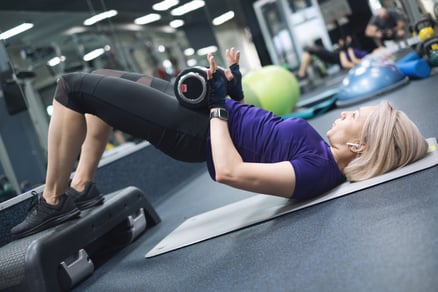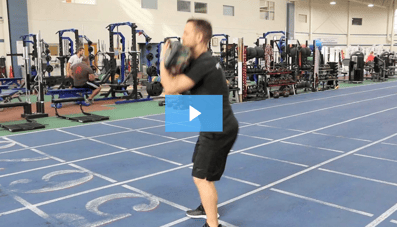 Squatting has always been the go-to exercise for those who want to make glute gains. You have probably heard someone say, “If you want to get better glutes, squatting is the way to go.” Recently, though, hip thrusters have gained momentum as the best exercise for glute development. Although, there is no concrete evidence that one is better than the other, some studies have been done (also here). Hopefully by the end of this blog, you will have a better understanding of the similarities and differences between these two exercises.
Squatting has always been the go-to exercise for those who want to make glute gains. You have probably heard someone say, “If you want to get better glutes, squatting is the way to go.” Recently, though, hip thrusters have gained momentum as the best exercise for glute development. Although, there is no concrete evidence that one is better than the other, some studies have been done (also here). Hopefully by the end of this blog, you will have a better understanding of the similarities and differences between these two exercises.
Glute Activation During Squats
During squats, the upper gluteal muscles help stabilize the pelvis as you walk out from the rack position. During the eccentric(downward) portion of the squat, only 20 to 30 percent of maximum voluntary contraction (MVC) was shown. At the bottom part of the squat, only 10 to 20 percent of MVC for glute activation was shown through EMG activity. The interesting part is that the bottom part of the squat is where everyone assumed you get the most glute activation, when in reality it is the lowest activation part. The concentric (pushing up) portion of the squat is where glute activation was seen to be the highest, at 80 to 120 percent. This makes sense because the main role of the glutes is to extend the hips.
Glute Activation During Hip Thrusters
During the hip thrust exercise, at the beginning phase, the glutes are relatively off because there is no external force placed on them. Because the first motion of the hip thrust is a concentric action (hip extension), the glutes begin to activate right away. It was measured to be at a range of 120 to 200 percent of glute activation during the concentric phase of the exercise. Another reason why MVC was higher is that the repetitions fairly quickly maintain a constant tension on the glutes.
Biomechanics of Squat and Hip Thruster
 Biomechanically these two exercises are different because the squat is performed in the vertical plane whereras the hip thruster is performed in the horizontal plane. This difference allows for different forces on the body. In a squat, the glutes must fire to create hip extension torque, but they must also fire in order to create hip external rotation torque to prevent knee valgus (knee buckle). In a hip thrust, the glutes fire to create hip extension torque, but they must also fire in order to create posterior pelvic tilt torque to prevent anterior tilting of the pelvis and lumbar hyperextension.
Biomechanically these two exercises are different because the squat is performed in the vertical plane whereras the hip thruster is performed in the horizontal plane. This difference allows for different forces on the body. In a squat, the glutes must fire to create hip extension torque, but they must also fire in order to create hip external rotation torque to prevent knee valgus (knee buckle). In a hip thrust, the glutes fire to create hip extension torque, but they must also fire in order to create posterior pelvic tilt torque to prevent anterior tilting of the pelvis and lumbar hyperextension.
With the squat, the limitation can be due to back strength, which you do not have with the hip thruster. On the other hand, glute strength is the limiting factor during the hip thruster. During a squat, you are typically able to get more hip flexion to avoid this issue.
The Verdict
For full range gluteal strength, a more complete neurological stimulus, and full development of the upper and lower gluteal fibers, you’ll want to perform both the squat and the hip thrust. Either exercise alone won’t suffice. The good news is that you don’t have to choose between squats or hip thrusts for maximal glute development; you should perform both movements.
This blog was written by Pedro Mendez, CSCS, FMS, Health/Fitness Instructor and Strength Coach at NIFS. To learn more about the NIFS bloggers, click here.

